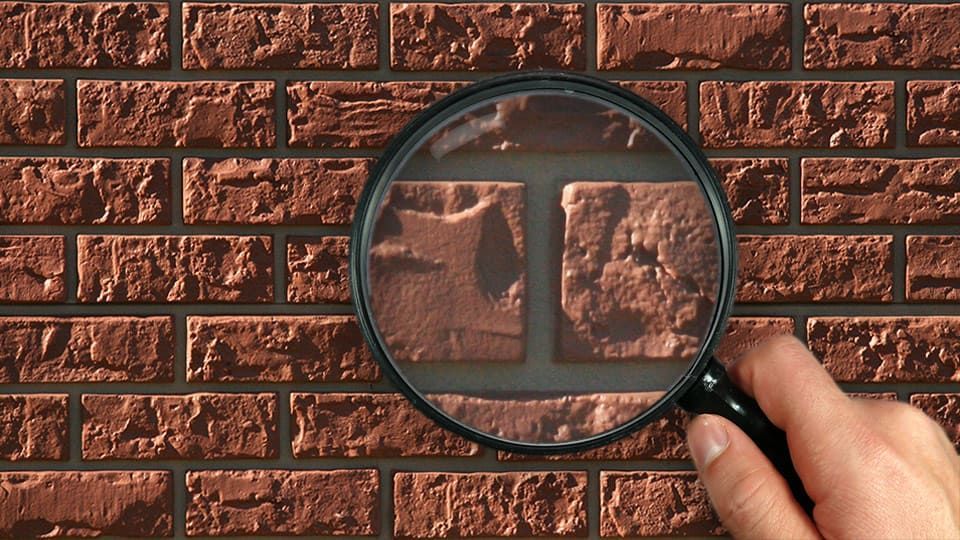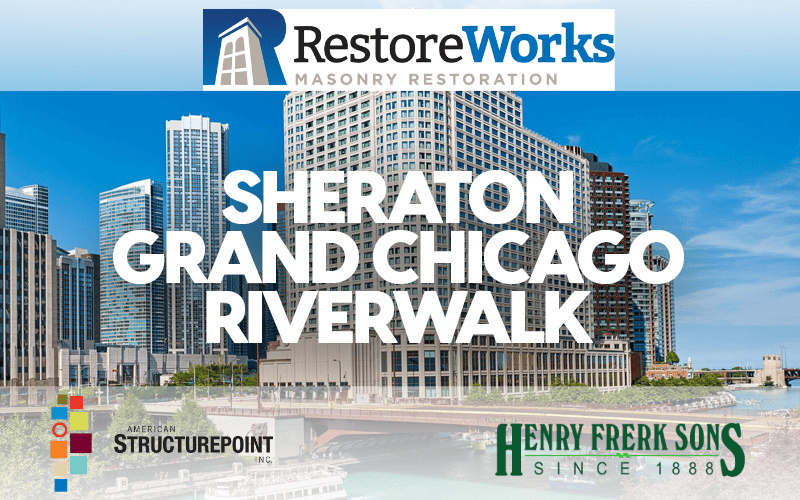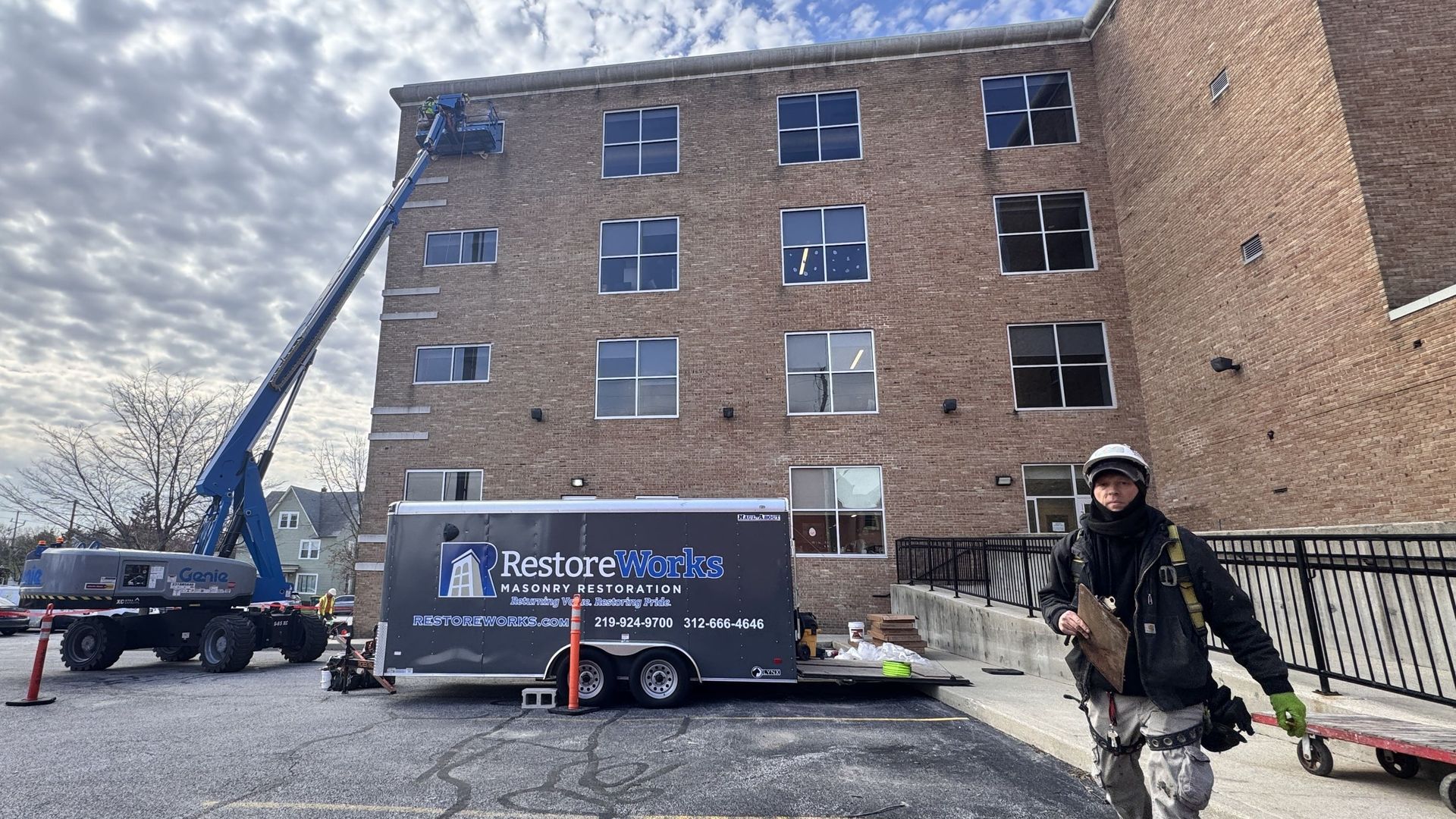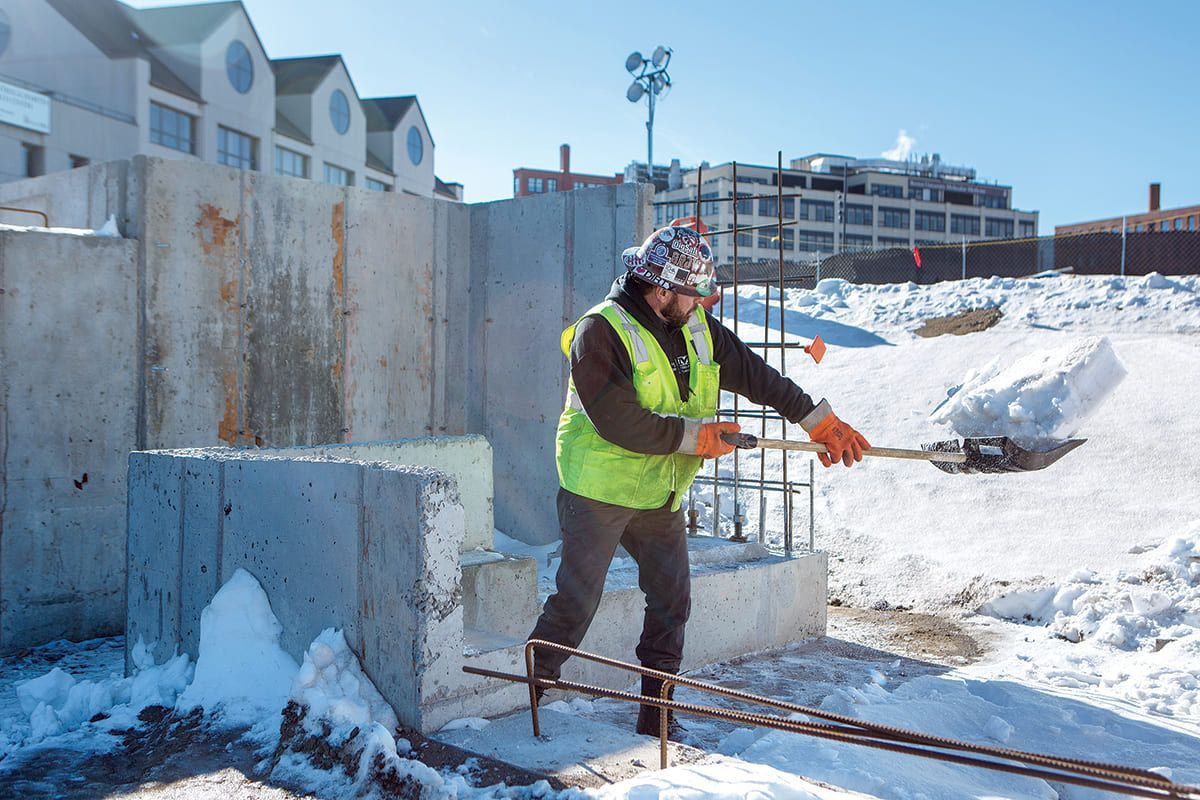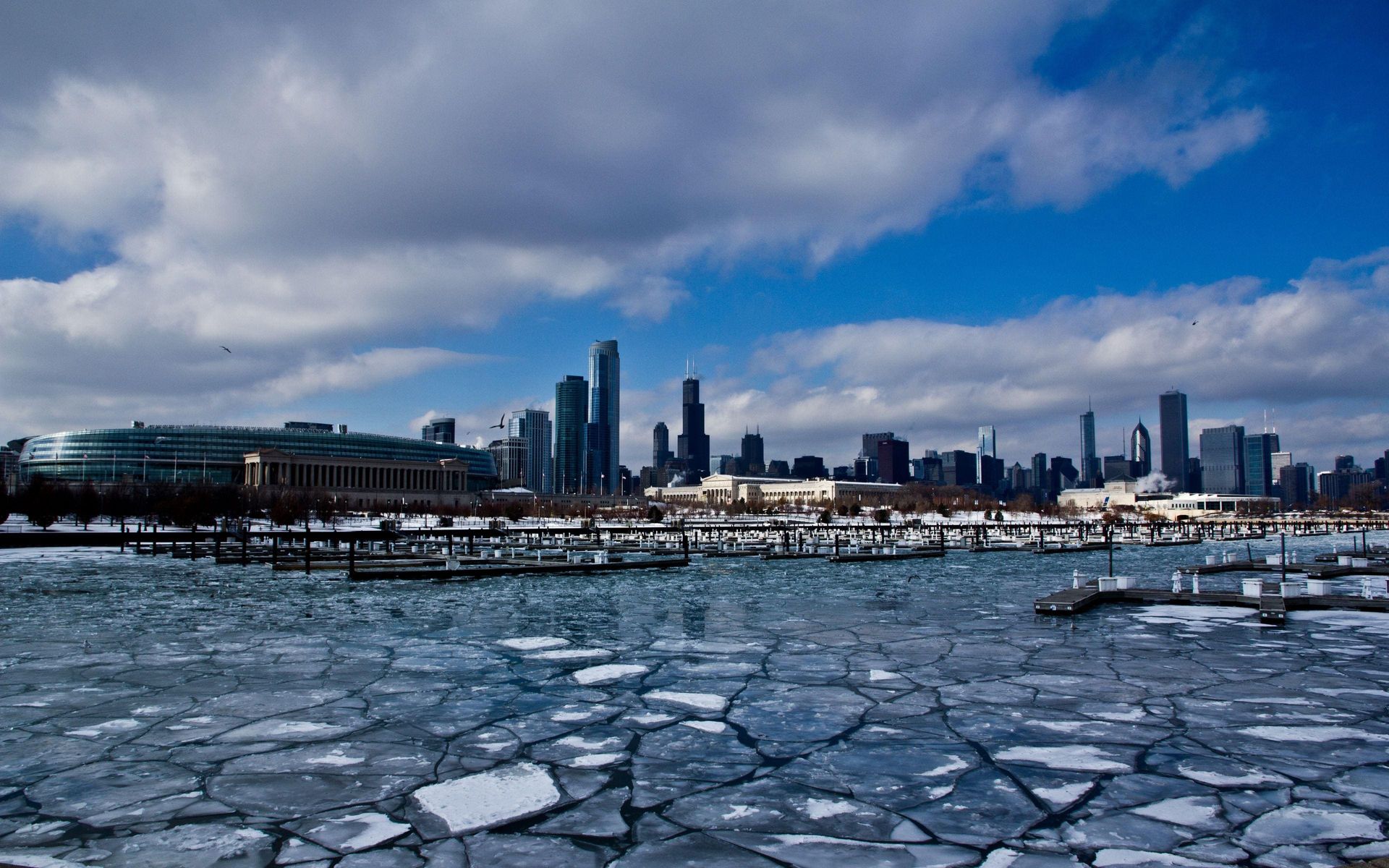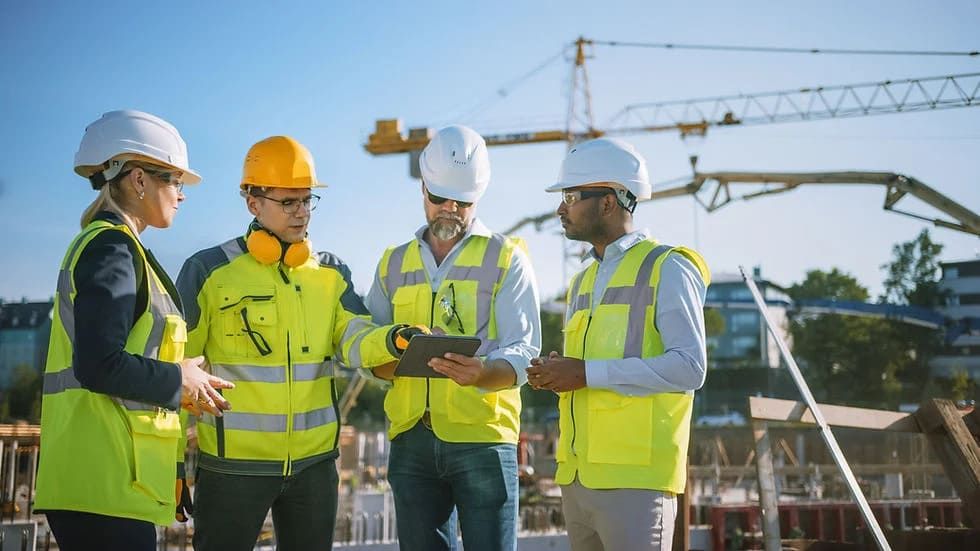Salt damage, often referred to as efflorescence or subflorescence in masonry, is a common issue in colder climates like Chicago and the Midwest, especially during and after the winter months. Understanding how to identify and address this issue is important for property and facilities managers to preserve your masonry structures.
What Causes Salt Damage in Masonry?
Salt damage occurs when soluble salts are introduced to masonry materials through external sources such as de-icing salts, or groundwater. These salts dissolve in water and travel through the pores of masonry. As the water evaporates, salts crystallize on or just beneath the masonry surface, leading to visible efflorescence or destructive subflorescence. During crystallization, salts can expand in volume by 5 to 10 times (500% to 1,000%). This expansion creates immense pressure within the masonry—up to 800 atmospheres—strong enough to cause damage, even to concrete.
- Efflorescence: White, powdery deposits on the surface of masonry.
- Subflorescence: Crystallization beneath the surface, causing internal pressure that leads to spalling or flaking.
Winter weather worsens these issues as freeze-thaw cycles increase the movement of water and salts within your masonry.
How to Identify Salt Damage
Early detection of salt damage can help you save on repair costs and prevent structural issues. Here’s what you should look for:
- White or grayish deposits: Efflorescence is a clear visual indicator of salt movement.
- Spalling or flaking: Subflorescence often appears as chips or flakes breaking off the masonry surface.
- Cracks and crumbling mortar: This may indicate salt or moisture issues.
- Discoloration: Salt and moisture can lead to staining that detracts from the building's appearance.
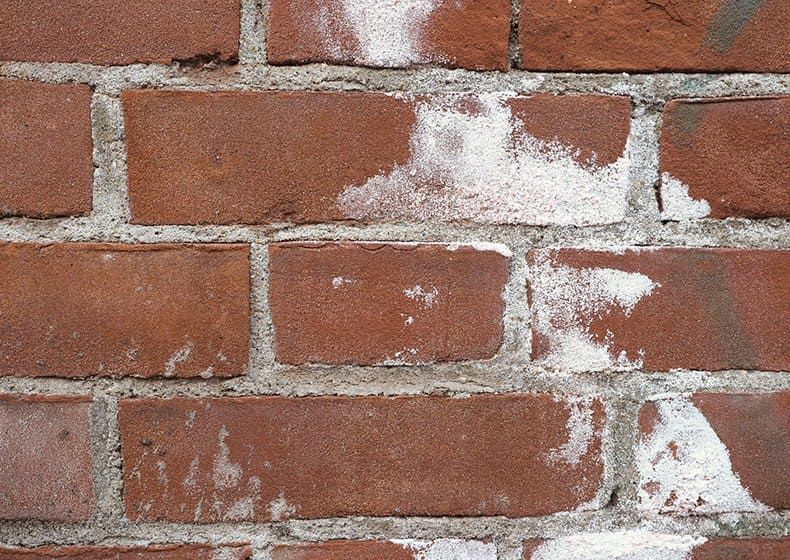
Why Salt Damage Matters
Beyond appearance-related concerns, salt damage can weaken your building’s structure. Cracking and spalling weaken the masonry and allow for deeper water intrusion, which worsens issues over time. Unresolved salt damage can also lead to safety hazards, specifically in load-bearing walls or facade systems. The costs of cleaning efflorescence can be significant as well. On one large project, rehabilitation costs exceeded $100,000 for labor and scaffolding to restoratively clean the tile.
Addressing Salt Damage
1. Assessment and Diagnosis
- Partner with commercial masonry restoration contractors to conduct a thorough assessment. The root cause of salt damage must be identified—including moisture infiltration, improper drainage, or the use of de-icing salts.
2. Cleaning and Surface Restoration
- Use gentle cleaning methods, such as low-pressure washing or specialized chemical treatments, to remove efflorescence without damaging your masonry.
- Avoid abrasive techniques like sandblasting, which can harm the surface and worsen the problem.
3. Repair and Replacement
- Replace spalled bricks or deteriorated mortar with materials that match the original appearance.
- Utilize techniques like repointing to restore mortar joints and seal gaps.
4. Moisture Management
- Install or repair drainage systems to redirect water away from the structure.
- Apply breathable water repellants to reduce water absorption while allowing moisture vapor to escape.
5. Preventative Measures
- Utilize alternative de-icing methods, such as sand or calcium magnesium acetate, to reduce salt exposure.
- Conduct regular inspections to catch early signs of damage
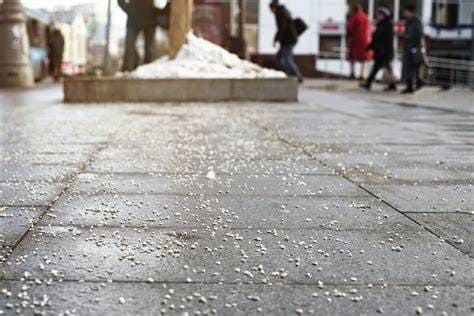
Partnering with Experts in Masonry Restoration
Addressing salt damage requires expertise from commercial masonry restoration contractors. At RestoreWorks, we understand the unique challenges faced by masonry structures, especially in harsh Midwestern climates like Chicago’s. Our team of Union-trained professionals works closely with property managers, facilities managers, architects, and engineers to provide solutions that will help preserve your buildings' structural integrity and appearance.
Final Thoughts
Salt damage in masonry structures is more than a visual concern, it’s a sign of deeper issues that can jeopardize your building’s lifespan and safety. By identifying the early signs of damage and working with restoration experts to address root causes, you can protect your investment and ensure the durability of your property.
Need expert help with concrete façade restoration, commercial masonry tuckpointing, or balcony repairs? Contact RestoreWorks today to schedule a consultation and protect your building against the winter elements.



